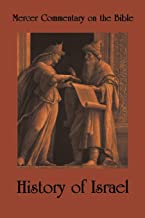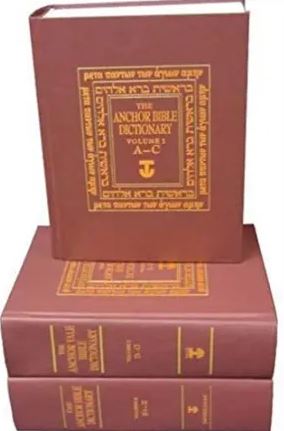NOTE:
This post has been withdrawn. The post has been published in my book, Rereading the Biblical Text: Searching for Meaning and Understanding. The approach taken in the book is to compare how different translations have approached difficult texts in the Old Testament. The goal of the book is to invite readers to reread the biblical text in light of the new understanding of the intent of the original writer of the text. You can order the book from Amazon.
Visit my Amazon author’s page to purchase the book (click here).
Claude Mariottini
Emeritus Professor of Old Testament
Northern Baptist Seminary
A Note About This Post:
Before “Rereading 1 Samuel 13:1” was withdrawn for publication, “Rereading 1 Samuel 13:1” was read by 45,635 readers. You can read “Rereading 1 Samuel 13:1” and other articles on problems in Bible translation by reading my book Rereading the Biblical Text: Searching for Meaning and Understanding. Below is the content of the book:
CONTENTS
Acknowledgments – Page xi
Abbreviations – Page xii
Introduction – Page xv
SECTION 1 — THE PENTATEUCH
Chapter 1. The Creation of Animals in Genesis 2:19 – Page 3
Chapter 2. The Serpent Was Right (Genesis 3) – Page 7
Chapter 3. The Seed of the Woman (Genesis 3:15) – Page 11
Chapter 4. Were They Really Giants? (Genesis 6:4) – Page 17
Chapter 5. “As Far as Dan” (Gen 14:14) – Page 20
Chapter 6. Abraham and the Promises of God – Page (Genesis 12:7) – Page 23
Chapter 7. The Sacrifice of Isaac (Genesis 22:8) – Page 26
Chapter 8. The Rape of Bilhah (Genesis 35:22) – Page 29
Chapter 9. Miriam, a Leader in Israel (Exodus 15:20) – Page 32
Chapter 10. Azazel (Leviticus 16:8-10) – Page 35
Chapter 11. Understanding Numbers 24:24 – Page 38
SECTION 2 — THE HISTORICAL BOOKS
Chapter 12. The Levite and His Concubine (Judges 19:1–30) – Page 43
Chapter 13. The Sacrifice of Jephthah’s Daughter (Judges 10:6–12:7) – Page 47
Chapter 14. The Fate of Jephthah’s Daughter (Judges 10:6–12:7) – Page 4750
Chapter 15. The Virginity of Jephthah’s Daughter (Judges 10:6–12:7) – Page 54
Chapter 16. Who Went Back to the City? (Ruth 3:15) – Page 59
Chapter 17. Was Ruth Barren? (Ruth 4:13) – Page 59
Chapter 18. King Saul: Little in His Own Eyes (1 Samuel 15:17) – Page 63
Chapter 19. How Old Was Saul? (1 Samuel 13:1) – Page 64
Chapter 20. David and Melchizedek (Psalm 110:4) – Page 67
Chapter 21. David’s Sons Were Priests ((2 Samuel 8:18) – Page 70
Chapter 22. “Him that Pisseth against the Wall” (1 Samuel 25:22) – Page 72
Chapter 23. Whose Cloak Did Ahijah Tear? (1Kinga 11:4–7) – Page 78
Chapter 24. The Challenges of Parenthood (2 Kinga 21:25–26) – Page 82
SECTION 3 — THE WISDOM AND POETICAL BOOKS
Chapter 25. Psalm 8:5: In Search of a Better Translation – Page 87
Chapter 26. Understanding Psalm 17:14 – Page 90
Chapter 27. Jezebel’s Wedding Song (Psalm 45:1–17) – Page 93
Chapter 28. Psalm 100:3: In Search of a Better Translation – Page 99
Chapter 29. Sons or Children? (Psalm 127:3-5) – Page 103
Chapter 30. Proverbs 29:18 – Page 106
Chapter 31. “Black and Beautiful” or “Black but Beautiful”? (Song of Songs 1:5) – Page 108
SECTION 4 — THE PROPHETICAL BOOKS
Chapter 32. The Use of Gender Inclusive Language (Isaiah 9:1) – Page 115
Chapter 33. “You Have Increased Their Joy” (Isaiah 9:3) – Page 118
Chapter 34. Who Will the Messiah Strike? (Isaiah 11:4) – Page 120
Chapter 35. The Way of the Lord (Isaiah 40:3) – Page 122
Chapter 36. “All Their Goodliness” (Isa 40:6) – Page 126
Chapter 37. The Proclaimer of Good News (Isaiah 40:9) – Page 129
Chapter 38. The Problem of Divorce in the Old Testament (Isaiah 50:1) – Page 132
Chapter 39. Beulah Land (Isaiah 62:4) – Page 135
Chapter 40. The Balm of Gilead (Jeremiah 8:22) – Page 138
Chapter 41. The Mother of Seven (Jeremiah 15:9) – Page 142
Chapter 42. The Coming of the Messiah (Daniel 9:25–27) – Page 144
Chapter 43. The Seventy Weeks of Daniel (Daniel 9:25–27) – Page 148
Chapter 44. The Knowledge of God (Hosea 4:1) – Page 152
Chapter 45. The Word “Hesed” in the Book of Hosea (Hosea 4:1) – Page 154
Chapter 46. The Word “Justice” in Amos (Amos 5:24) – Page 157
Chapter 47. “What the Lord Requires” (Micah 6:8) – Page 160
Bibliography – Page 165
Index of Subjects – Page 169
Index of Authors – Page 171
Index of Scriptures and Other Ancient Documents – Page 173
Claude Mariottini
Emeritus Professor of Old Testament
Northern Baptist Seminary
NOTE: Did you like this post? Do you think other people would like to read this post? Be sure to share this post on Facebook and share a link on Twitter or Tumblr so that others may enjoy reading it too!
I would love to hear from you! Let me know what you thought of this post by leaving a comment below. Be sure to like my page on Facebook, follow me on Twitter, follow me on Tumblr, Facebook, and subscribe to my blog to receive each post by email.
If you are looking for other series of studies on the Old Testament, visit the Archive section and you will find many studies that deal with a variety of topics.

















>I cracked open my ESV (which is based on the RSV) and sure enough found ellipses where my NIV had numbers. Just one more reason that I’m starting to like my ESV more and more each day…
LikeLike
>Dear Jeff,The ESV is a good translation. The problem is that very few people know and read the ESV. Keep on reading and studying the Bible for in keeping it there is great reward (Psalm 19:11).Claude MariottiniProfessor of Old Testament
LikeLike
>Fascinating article. Thank you for presenting such an important subject so clearly and understandably.I’ll be linking to your article on my blog this evening. Peace.
LikeLike
>Milton,Thank you for your comments. I appreciate your willingness to make the article available to your readers.Claude Mariottini
LikeLike
>Fascinating stuff, thanks.What are the chances that the KJV is correct? I.e. is it possible that this is more about when the following events happened than how long Saul reigned?(I’m hoping the answers no, btw! 😉 )
LikeLike
>Very interesting post and very well written. I found it via Milton Stanley’s site and it is great. I think I will work it into a upcoming Sunday School lesson about conflict..*LOL*. Thanks for your work and your scholarship.Stay strong, be couragous, and serve God in all things.Frank
LikeLike
>Frank,Thank you for your comments. I am happy to know that you can use the article in your ministry. Thank you for visiting my web page. I hope future articles will also be of help to you.Happy New Year.Claude Mariottini
LikeLike
>Graham,I am sorry to disappoint you but the text in the Hebrew Bible is intending to tell us how old Saul was when he began to reign and how long he reigned. The KJV is trying to make sense of a corrupted biblical text. The real numbers are just not there.Thank you for visiting my web page. I hope to hear from you again.Claude Mariottini
LikeLike
>Yes, I would like to say that Saul actually ruled over Israel two years. Cause in the Complete Jewish Bible it says, Saul was… years old when he reign; and he reigned two years. Now, in Jewish literature it states that Samuel was a judge for ten years, and then one year was when Saul was in the process of being anointed, then the next two years was his actual reign. and then you add the seven years of David in Hebron you have a total of twenty years. So the book of Acts well it was an error but hey mistakes happen.LaBrian
LikeLike
>He does seem to strongly assume that an age is being given here. While that is possible, my take is there are also other valid explanations… It reads, Sha’uwl malek ben shaneh… or “Saul was the son of a year”. The thing that makes it difficult to be dogmatic about something like this is, we don’t know the idioms and colloquialisms of that particular time… it may seem like a stretch, but certainly not outside the realm of possibility that it was a figure of speech used to denote innocence. This explanation does seem to fit the record of events that unfold in the account. The Targum reads it this way: “as the son of a year, in whom there are no faults, so was Saul when he reigned;” Although the Targum does contain much midrashic expansion of the texts, here it seems to be understood by the rabbis as a figure of speech. This seems much more plausible to me, it just seems kind of incredible that scribes could make such an obvious mistake and lose the original age and time during the reign. Plus these Rabbis were not trying to work their way around a problem text… they were just paraphrasing it as they understood it. So the jist here is that for the first couple of years, he was innocent and did no wrong… after that however, well, you know the story… he was a rather naughty boy, lol.After that, “and when he had reigned two years over Israel” The chronologers (Seder Olam Rabba, c. 13. p. 35. Juchasin, fol. 11. 1. ) understand the whole of his reign to be two years. Now that seems pretty incredible, especially since Acts gives it a time frame of 40 years. Some interpret it he reigned two years well, and the rest in a tyrannical way; or that at the end of two years, when David was anointed, the kingdom was not reckoned to him, but to David; and to this purpose Dr. Lightfoot writes, that he had been king one year from his first anointing by Samuel at Ramah, to his second anointing by him at Gibeah (Gilgal I suppose he means); and he reigned after this two years more, before the Lord cast him off, and anointed David; and the time he ruled after that was not a rule, but a tyranny and persecution. If it is a MUST that the 2 years must be a total time of reign; if the intent is to give us that time, than this explanation makes the most sense. The official reign recognized by God from that point would be 2 years. Yet in human terms, he reigned a total of 40. This agrees with the perspective of the chronologers, and gives an actual time span of recognized reign. Now I do know that some insist there are numbers missing here, but I find it interesting that some experts such as Lightfoot seem to have no problem with this text… not a clincher but it seems to add credibility to the notion that to insist that numbers are missing and an attempt at giving an age of Saul is in view here at least could possibly be misunderstanding the text… of course I wouldn’t be dogmatic about it and of course respect very much your opinion :)And of course it’s possible the age information etc could be left out, as I believe inerrancy is of course referring to the “original documents”.Regards,Brian
LikeLike
>Brian,All the proposed solutions that you give to solve the problem are only hypotheses. The fact is that even the rabbi had problems with the text. Some of the solutions you propose are creative ways of addressing the problem but some of them are just impossible. For instance, the one that he was innocent. What the rabbis probably meant was that “mentally” Saul was one year old.The other proposal, that he reigned 2 years as a good king and 38 years as a tyrant is a stretch of the imagination. If you read my explanation, 12 years for Saul’s reign fits the historical facts in 1 Samuel.I believe it is much better to accept the fact that the number is missing in the text. This view fits well with other biblical passages were words and even numbers were omitted by mistake.Claude Mariottini
LikeLike
So what’s to be done with Acts 13:21? Paul was a Pharisee from Saul’s tribe. What better source, besides Samuel, could you have on Saul’s reign?
LikeLike
Marcy,
Paul was not a good source for Saul’s reign. Paul lived 1,000 years after Saul and what Paul learned about Saul, he learned from the writing of the rabbis who also learned from the rabbis who came before them.
Samuel could not know how long Saul reigned because the Bible says that Samuel died before Saul died.
Thank you for reading and commenting on the post.
Claude Mariottini
LikeLike